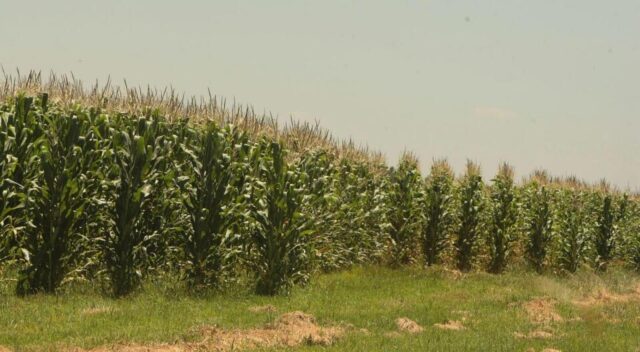There will likely be increased demand for South Africa’s maize towards the end of the year, spelling good news for SA maize farmers and traders. However, the potential increased demand at the end of the year could add upside pressure on prices for grain users.
There will likely be increased demand for South Africa’s maize towards the end of the year, spelling good news for South African maize farmers and traders, Agricultural Business Chamber (Agbiz) chief economist Wandile Sihlobo said on Monday.
However, the potential increased demand at the end of the year could add upside pressure on prices for grain users.
“South Africa also has established markets in the Far East and Europe, which have consistently remained active in the maize import business,” he said.
In addition to this solid regional maize demand, the added upside factor to maize prices at the end of the year into the new year would also be the uncertainty about the new season crop on the back of an expected El Niño event.
“The uncertainty could be an issue, although we hope El Niño will have a mild impact on the 2023/24 production season, because of better soil moisture on the back of four consecutive rainy seasons.
“With that said, the effect of the expected El Niño on Zimbabwe could again be severe as the country is not using similar farming inputs as South Africa regarding seeds and certain agrochemicals, and even the level of fertiliser use is lower. All these issues influence the yield-level, especially in potentially drier seasons,” he said.
South Africa is in a relatively strong position as according to recent estimates by the Crop Estimates Committee (CEC), the country’s 2022/23 commercial maize production could reach 16.1 million tonnes, up 5% year on year and the third largest on record.
Given South Africa’s annual maize needs are roughly 12 million tonnes, the country could have more than 3 million tonnes for export markets in the 2023/24 marketing year that started in May, said Agbiz
However, neighbouring Zimbabwe was not as fortunate as South Africa.
Agbiz said Zimbabwe’s 2022/23 maize production could reach 1.5 million tonnes, almost half of the ample harvest of 2.7 million tonnes in the 2020/21 production season, according to the latest estimates by the Pretoria Office of the United States Department of Agriculture (USDA).
However, the expected harvest of 1.5 million tonnes was a mild improvement from the 2021/22 production season’s maize harvest of 1.4 million tonnes, but 32% lower than the annual maize needs of 2.2 million tonnes.
Paul Makube, a senior agricultural economist at FNB, said on Monday in a note he was optimistic about the short-term fortunes of South Africa’s crop farmers, pointing out that the sector was likely to end the current harvesting season on a positive note, with projections of a good harvest of around 19 million tons.
“The extensive rains have also served to replenish groundwater reserves and soil moisture-levels, which puts farmers on a positive footing going into the next planting season,” he said.
However, Makube cautioned that these factors would not be enough to support crop farmers through an extended or extreme El Niño period, and farmers would need to adapt quickly and implement sustainable farming practices that could mitigate the impact of changing weather patterns.
Makube said, “While South Africa produces enough staple foods for its own needs, affordability and rapidly rising food inflation are major concerns.
“As weather patterns change and farmers face challenges and rising production costs, the affordability of food becomes a significant concern for vulnerable populations with lower levels of disposable income and this underscores the need for proactive measures to address food security, not just by farmers but also by all stakeholders in the food production chain,” he said.
– BUSINESS REPORT







